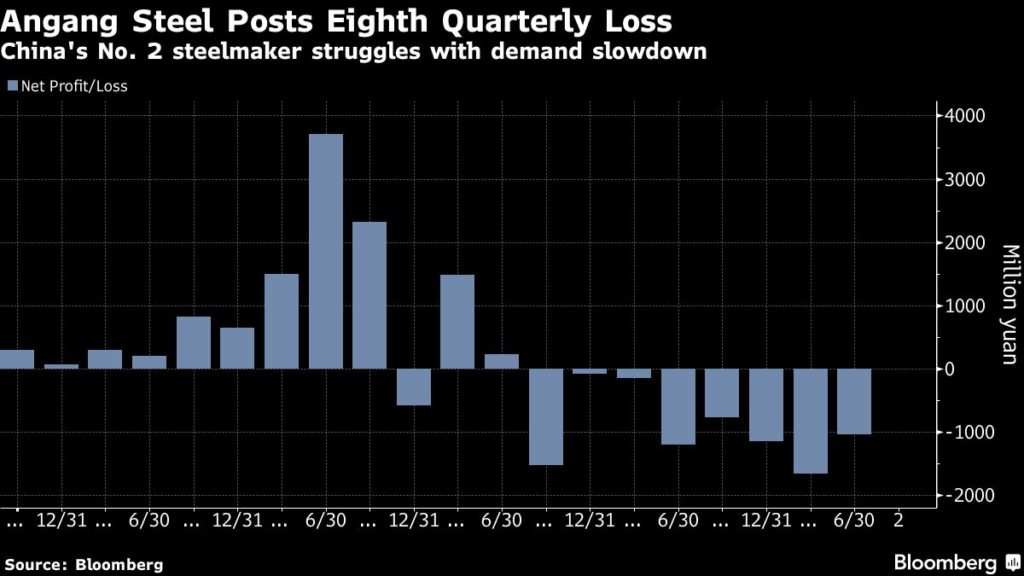Iron ore price tumbles back below $100 as China property woes deepen

Iron ore slumped back below $100 a ton, snuffing out a rebound, as pessimism over China’s economic prospects again weighed on industrial commodities.
The steel-making material rose almost 10% over the past two weeks on tentative signs that the worst of China’s summer steel rout might be over. But soft manufacturing activity and another round of downbeat news from the country’s property sector stung prices on Monday.
A protracted real estate downturn has squeezed Chinese steel demand and triggered a wave of losses across the industry. At a gathering in Beijing last week, executives from 18 of the country’s biggest producers vowed more “self-discipline” to alleviate a glut of the metal.
Iron ore futures fell 3.9% to $97.10 a ton in Singapore by 3:47 p.m. local time. Steel futures in Shanghai declined.

Factory activity in China contracted for a fourth straight month in August, while the latest property sales figures showed a worsening residential slump. One of the nation’s biggest developers posted its first loss in more than two decades.
It’s “difficult to fundamentally improve the predicament of the iron and steel market” while supply is greater than demand, Angang Steel Co. — the listed arm of the country’s second-biggest steel producer — said in its earnings announcement, which revealed an eighth straight quarterly loss.
Last week’s Beijing summit was convened by the China Iron & Steel Association to address growing pressures on the industry that still makes about 1 billion tons a year. The association said steelmakers needed to avoid “involution” — a phrase denoting destructive competition that’s become popular in China in recent years.
The industry is used to operating under conditions of continuous growth, and ways to counter lower demand are still being worked out by companies, industry groups, and the government, the association said.
Few Chinese steelmakers have made a profit in 2024 as prices plunge, and there’s growing calls for action to stem an oversupply crisis. Angang racked up a net loss of almost 1 billion yuan ($140 million) in the second quarter, about 15% less than a year earlier.
Base metals also joined broad declines across financial markets in Asia, with zinc — often tied to sentiment in China’s steel market — leading losses with a drop of 1.5%. Copper fell 0.2% and aluminum declined for a fourth day.
Read More: China’s bulging commodity stockpiles show depth of economic woes
More News
{{ commodity.name }}
{{ post.title }}
{{ post.date }}

Comments